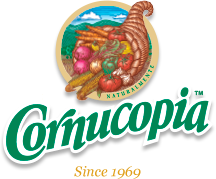Questionable Ingredients: Artificial Colors and Flavorings
7 Artificial Colors and Flavorings that should make you think twice.

Choosing to read the ingredient list for your pet’s food can be a frightening endeavor depending on what you’re currently feeding. But today, that choice is necessary because of the ingredients pet food companies are using.
Unfortunately, the ingredient lists for many of the products offered by the biggest names in cat and dog food are usually shockingly long and chock full of vague descriptors, multi-syllabic chemical compounds, and a hearty blend of artificial dyes and flavors.
We’ve gathered together a list of some of the pet food industry’s favorite go-to dyes and fillers. While the FDA and FFD&C have yet to declare any of the following flavorings and artificial colors unfit for use in pet food – enough research exists to have pet owners thinking twice.
Note: The description for each of the following ingredients was sourced from guidelines listed by The American Association for Feed and Control Officials (AAFCO). As per their website, the AAFCO is responsible for establishing guidelines, which are then left for each state to interpreted. It becomes the responsibility of each unique manufacturer to ensure that their product holds true to these guidelines.
Blue No. 2
A Federal Food, Drug and Cosmetic Act (FFD&C) artificial coloring agent principally consisting of various disodium and sodium salts. The full process calls for heating indigo or indigo paste and sulfuric acid. The color additive result is then isolated and subject to various purification methods. It’s also worth noting that the indigo/indigo paste that serves as the dyes base is produced by combining various chemicals including: formaldehyde, aniline, sodamide, and potassium hydroxides.
One of the largest studies, thought it couldn’t thoroughly prove its results, linked the dye to brain tumors in male mice. Despite studies like these the FDA has concluded that when it comes to Blue No. 2 there is “reasonable certainty of no harm.”
Red No. 40
A FD&C coloring additive, Red No. 40 principally consists of disodium salts.
Though it is the most commonly used food dyes and one of the most heavily tested, several of the test that it underwent were labeled as flawed and inconclusive. The Review by the FDA committee acknowledged issues with the dye, but deemed any evidence of harm as inconsistent and unsubstantial.
Yellow No. 5
A FFD&C coloring primarily consisting of a trisodium salt that is processed using hydrochloric acid and sodium nitrate among other chemicals and salts.
Yellow No. 5 is the second most commonly used dye (behind Red No. 40). Similar to several other dyes, Yellow No. 5 has bee known to cause mild allergic reactions, especially in those persons (and animals) sensitive to aspirin.
Yellow No. 6
A FFD&C coloring additive consisting of disodium salts that is often manufactured using hydrochloric acid, sodium nitrate, and sulfuric acid among other chemical ingredients.
This is the third most used dye. Several Industry-sponsored tests have shown that the dye can cause tumors in the kidneys and adrenal glands. Further, trace amounts of various carcinogens often contaminate Yellow No. 6. Despite these findings, the FDA has found the date to be insufficient, deeming Yellow No. 6 safe, posing no significant cancer risk to humans. Yellow No. 6 has also been known to cause the occasional allergic reaction.
Animal Digest
According to the AAFCO, Animal Digest is a product resulting from the enzymatic and/or chemical hydrolysis of non-decomposed and clean animal tissue. The animal tissue used should exclude any horns, teeth, feathers and hooves – except in trace amounts that are unavoidable when using good processing practices. If a source is listed, the product must correspond thereto.
Translation: Animal Digest a boiled-down broth consisting of unnamed parts from unnamed animals. The animal tissue used can be from any source in any combination., including but not limited to: “4-D” (diseased, disabled, dead, or dying prior to slaughter) animals, animals euthanized in shelters, roadkill. There is little to no quality control involved during Animal Digest production.
Flavor
An unspecified substance (such as a spice or extract) that is intended to add flavor to a product.
Often times, a label will give no additional information as to the origins or nature of the flavor, such as whether or not it has been derived naturally or chemically.
Glandular Meal
An official definition of this term did not exist at the time this article was published.
Often listed as being the source for various flavors (like “liver flavor”) in low and poor quality foods. The name ‘glandular’ implies the usage of various glands and organs of unspecified animals.
If artificial dyes and chemically engineered flavors have no place in what we eat, why should they have any place in what our pets eat? Your pet's color vision is 80% less acurate than that of humans anyway. Pet food companies put artifical dyes in pet food so that it appeals to you, the human, not your pet. This is yet another ploy of the commercial pet food industry to placate human perceptions, and has nothing to do with the quality or nutritional factors in your pet's food. Don't be fooled!
Just another reason why Cornucopia has spent over 40 years perfecting our food formulas, and ensuring that they are free of artificial flavoring, added natural flavoring, and animal by-products.



